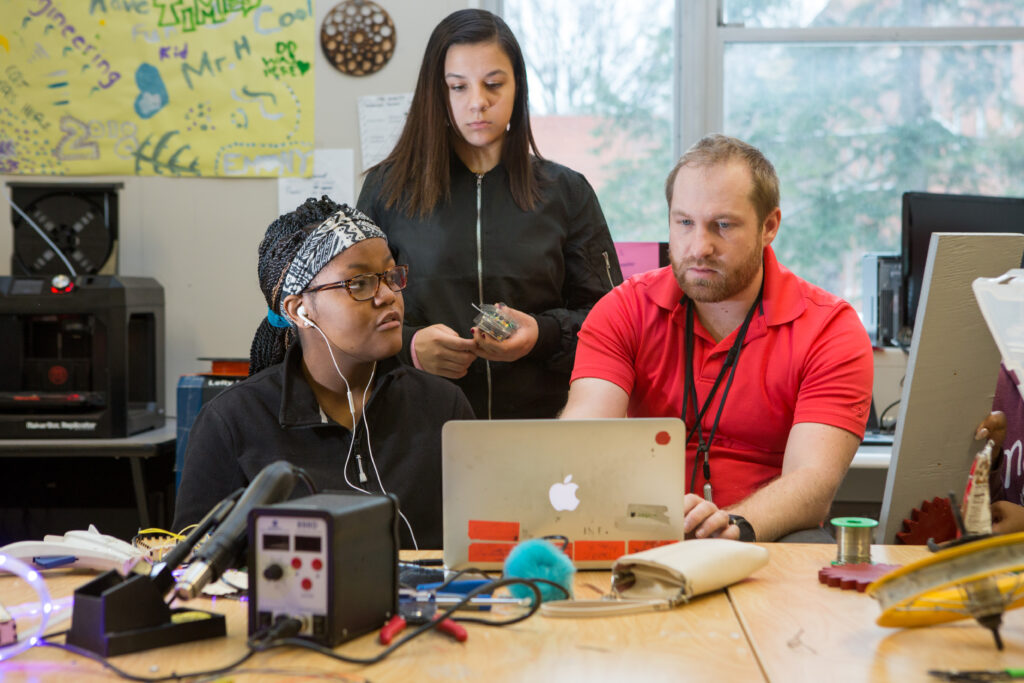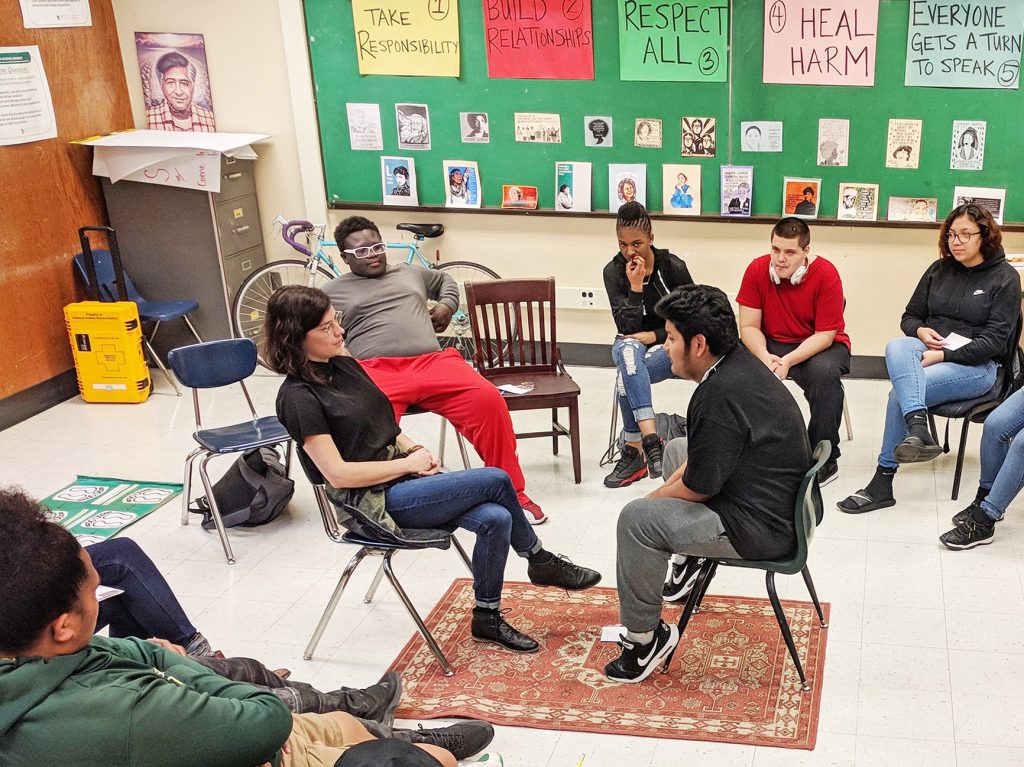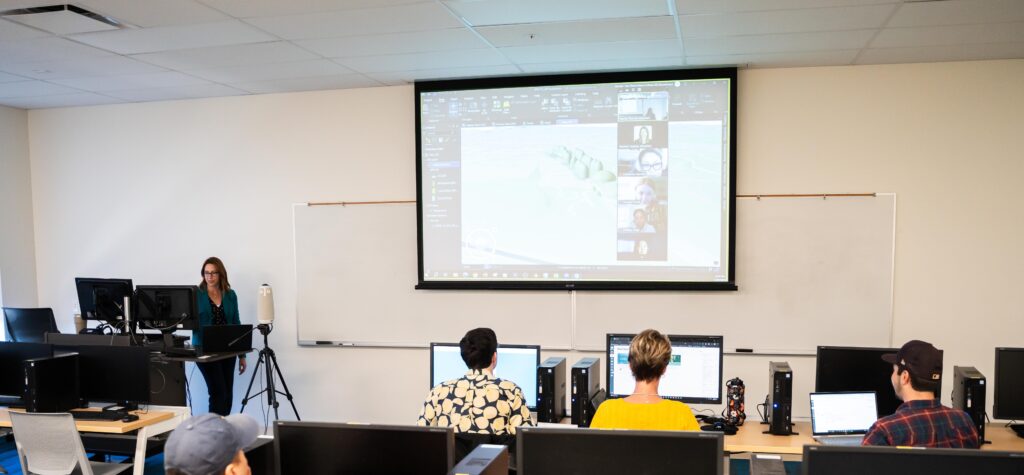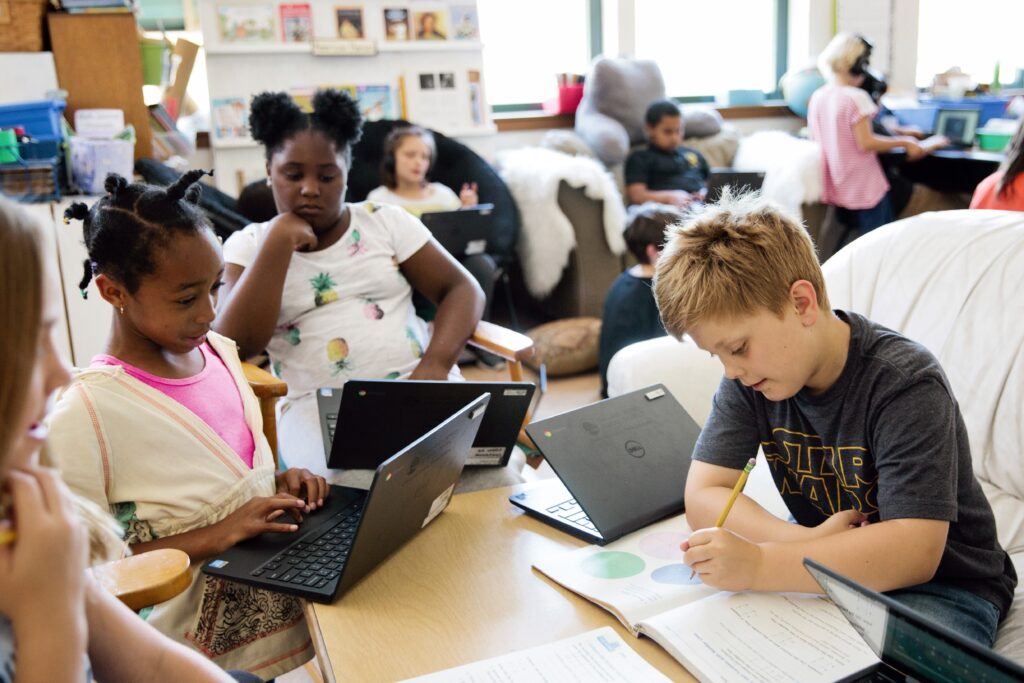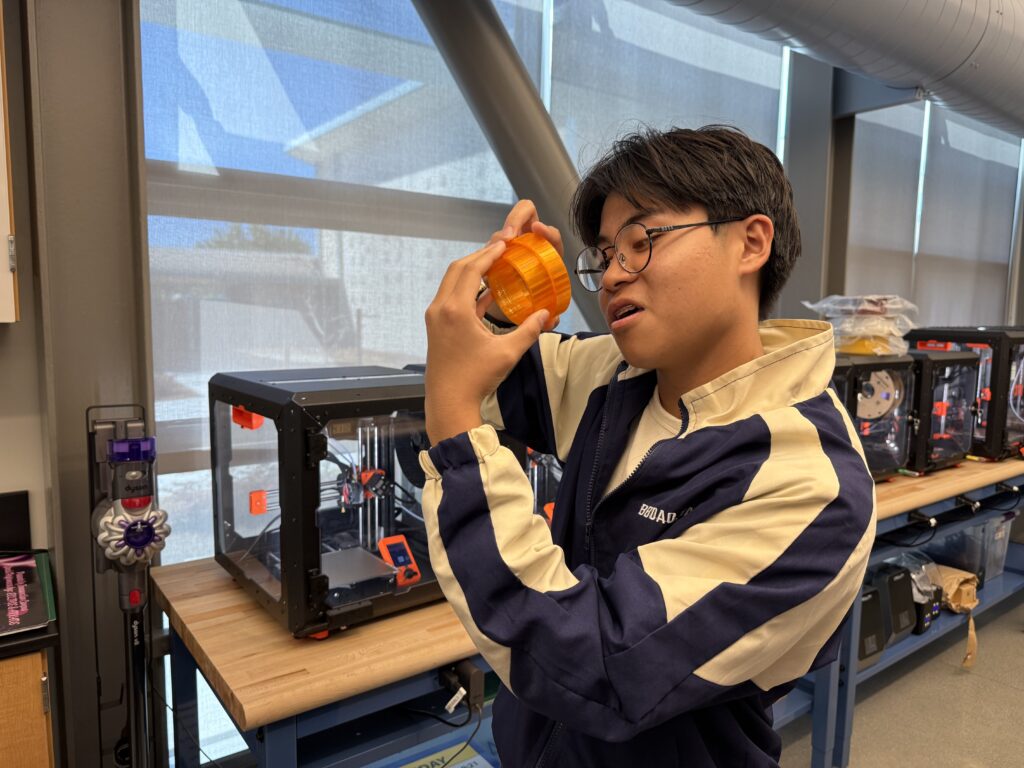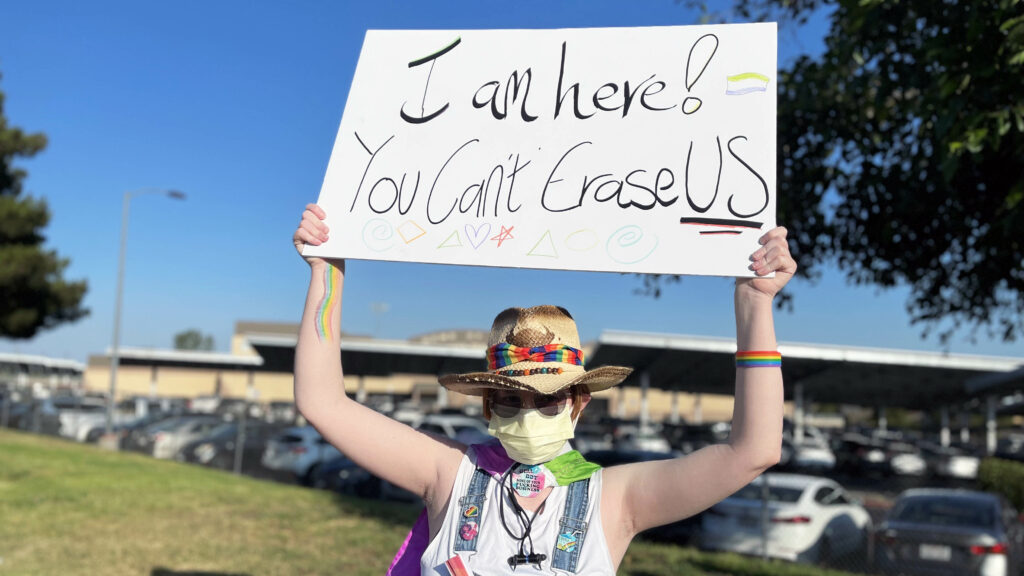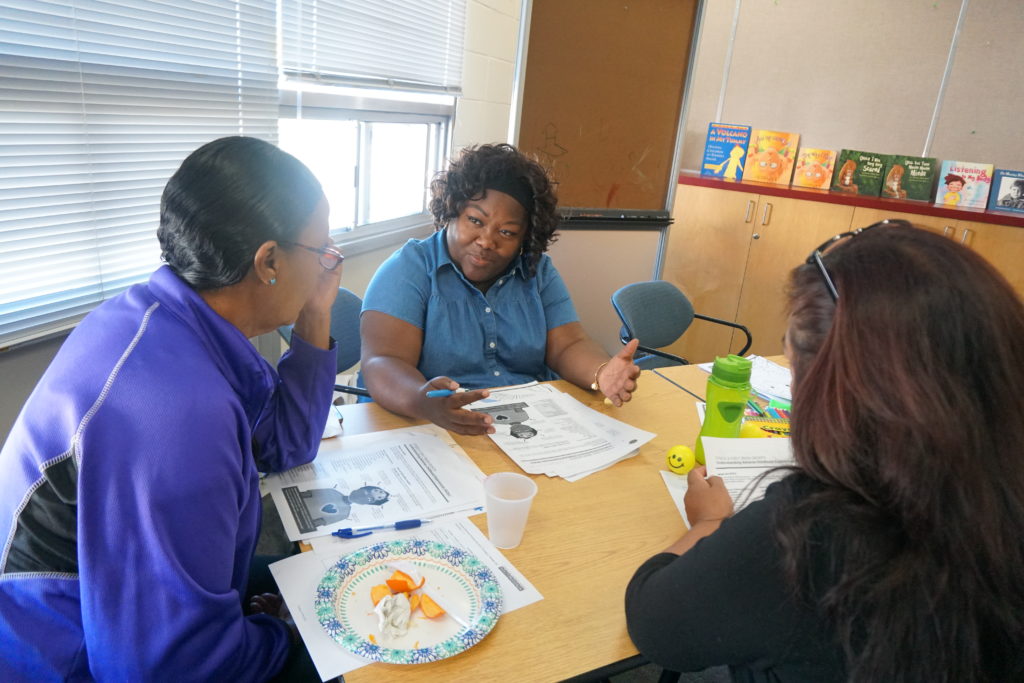
A teacher reviews students’ project notes on a computer.
Credit: Allison Shelley for EDUimages
California’s teacher workforce needs stronger stewardship.
Our state has established high standards for English, math, science and history that lay out what students must know and be able to do. But, as I have argued before, California has failed to adequately ensure even a majority of local educators are trained on — and equipped to teach to the level expected by — these standards.
There are many reasons for this failure, but the state can provide more coherent and effective leadership.
Here’s the improvement I propose:
Currently, the state has one entity responsible for preparing and licensing teachers, the California Commission on Teacher Credentialing (CTC). But once teachers receive their credential, responsibility for professional development and educator support falls to the districts and county offices of education where they work. With nearly 1,000 local school districts and county offices of education, there is no oversight of whether experienced teachers are prepared to implement state standards.
Some state entity needs to take charge, and overcome the current situation: no large-scale vision, too many small-scale, one-time initiatives, and fragmented programs and governance.
We need legislation that would empower the current California Commission on Teacher Credentialing to provide the needed overall leadership. Currently, the commission, whose members are appointed by the governor, sets teacher preparation standards and approves postsecondary teacher preparation programs that meet the standards. Also, the commission provides teacher performance assessments that prospective teachers must pass to attain a credential.
California is one of 10 states that has a state Department of Education and a separate agency — the Commission on Teacher Credentialing — overseeing teacher preparation and licenses. But we can take advantage of this division by increasing the CTC’s role. It makes no sense, given the conditions of education today, to force the commission to stop working with teachers and principals once they have their credential. Rather, it should also be responsible for a career continuum and a long-term educator learning system.
Legislation should specify that the commission will encompass the entire career of a principal, teacher and early childhood permit holder. It might make sense to start with early career teachers and scale up from there, because this would be a continuation of what it does now. The legislation should empower the commission to support professional development across the spectrum, from candidates working toward a credential to experienced senior teachers, principals, instructional coaches, and other leaders.
Of course, this needs to be done carefully and deliberately. The kinds of things we want to get right require the teacher commission to work closely with school districts and county offices of education.
CTC should start with a strategic plan and road map reaching teachers statewide to signal that building educators’ skills is a major state role and responsibility. The road map would include the many moving parts that must be integrated into subject matter teaching. This includes key suppliers of products, curriculum developers, textbook publishers, universities, county offices and much more. The role of school districts must be rethought, including how to develop teaching capacity within districts and rely less on vendors that come and go.
The plan would create micro-credentials or other forms of state recognition of teaching competence in current state subject matter frameworks, such as the new math framework. Some districts in California have already been experimenting with micro-credentials. Other states such as Mississippi and New York have used micro-credentials to enhance pupil outcomes. The plan should include integration of current fragmented state-funded capacity grants. The commission would lead a project to estimate the costs of implementing the proposed state and local capacity-building role, including analyses of cost-effectiveness, such as using digital professional development delivery.
California has high academic standards and a talented teaching force. With effective statewide leadership and oversight, we can address persistent achievement gaps and help our students succeed.
•••
Michael Kirst is a professor emeritus at Stanford University and served 12 years as president of the California State Board of Education.
The opinions expressed in this commentary represent those of the author. EdSource welcomes commentaries representing diverse points of view. If you would like to submit a commentary, please review our guidelines and contact us.
